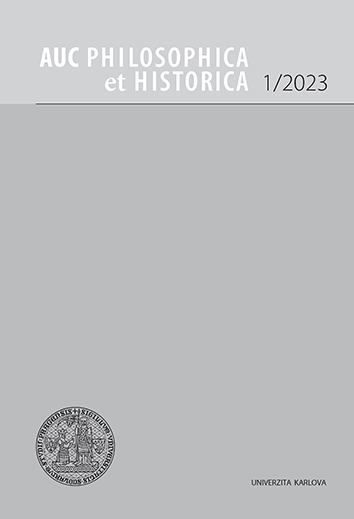AUC Philosophica et Historica (Acta Universitatis Carolinae Philosophica et Historica) is a multidisciplinary academic journal focused on the humanities with more than 50 years of tradition.
The journal is indexed in CEEOL, DOAJ, and EBSCO.
AUC PHILOSOPHICA ET HISTORICA, Vol 2010 No 1 (2010), 29–46
Proměny obrazu pražské zeleně v 19. století
[Changes in the Image of Prague’s Green Space in the 19th Century]
Barbora Kubecová
published online: 18. 05. 2015
abstract
Changes in the Image of Prague’s Green Space in the 19th Century Green space is nowadays an essential element of city urbanism and its importance isn’t just in its aesthetic function. Social function of the green space and its contribution to better, cleaner and more human city environment is undeniable. Green spaces make cities more attractive and create an ideal place for relaxation and fun. They often contrast with the intense urban development; they become part of conservation zones, historic buildings, historic monuments themselves and destinations of visitors. The green space can also be a socially stratified space, intersection, socio-cultural centre and a place expressing the history and national symbolism. Peter Clark, British historian, along with an international team of researchers came up with an original comparative research of green spaces. The article Image of Prague’s Green in the 19th century was inspired by their book The European City and Green Space. The aim of this article was to create an image of Prague’s green in the dynamic 19th century, through the historic record – nine Prague guidebooks dating back to 1835–1909. The analysis of the individual guides also raised several questions, e.g. whether the green space was an integral part of the urban area also in the 19th century. Whether these green spaces were identified as a prime location in the city and whether the city’s image was made by their presentation. Which urban green spaces were namely in question and what their meaning and function was. How the presentation of urban green space changed during the 19th century and what is today’s tradition of these places like. The author tries to introduce and define the city of Prague and its green space, present types of green space that emerged in 19th century and their development in the dictate of time. Through the study of these guides the author concludes that 19th century Prague was presented thereby as a green city the green space of which was also one of its advantages. The chosen guidebooks devoted sufficient space to the green area, although it is true that as a result of expansion of the city and birth of public cultural institutions, whether museums or theatres, this area was often obscured by cultural sanctuaries. The dominant feature, which was presented by the guidebooks and their description and choice, was the socio-cultural function. Green space also played an important role in presentation of the city and provides evidence of growing national self-confidence. The 19th century saw an enormous change of the former fortress city. The 19th century laid the foundation stone for building a large amount of green space in the heart of the city and in newly emerging districts as well. Prague urban space has become a mosaic composed of various types of urban green areas that throughout the centuries gradually and in accordance with the contemporary fashion enriched the city.
periodicity: 2 x per year
ISSN: 0567-8293
E-ISSN: 2464-7055
